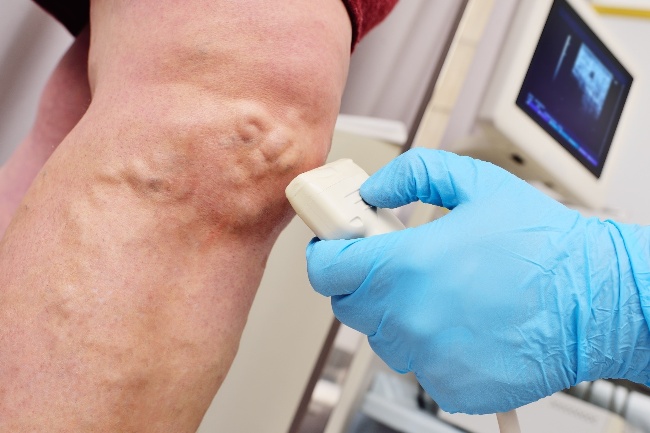Link Between Obesity and Peripheral Artery Disease

You probably already know that obesity raises your risk of many different illnesses and ailments. What you may not realize, though, is that one of those conditions is peripheral artery disease (PAD). People who are obese have a significantly higher risk of developing PAD and are 3 to 5 times more likely to develop critical limb ischemia, the most serious complication of PAD.
What is PAD? It’s a condition that develops because of cholesterol sticking to an artery wall. As time goes by, cholesterol plaque accumulates more fats and other substances, building up until it causes a condition called atherosclerosis. Atherosclerotic plaque is dangerous because it enlarges, hardens, and blocks the flow of blood through the artery. PAD can occur in any artery, but it’s most common in the legs. Pain and cramping that occurs when walking and goes away when the person rests is usually the first sign of PAD.
Unfortunately, many obese patients think this leg pain is caused by the stress their weight places on their legs. They ignore the pain because they don’t realize it represents a serious condition. Leaving PAD untreated is dangerous because it can progress to critical limb ischemia. Once it reaches that point the pain doesn’t go away with rest. The tissues in the legs don’t get enough blood, which leads to the development of non-healing ulcers and infections in the feet and ankles.
Obesity is an independent risk factor for PAD, which means that simply being obese raises the probability that you’ll develop the condition. The risk is even higher for someone with a body type that carries weight around the waist. Why is obesity so problematic? It involves many different hormones and biochemicals. The main issue, however, is inflammation. Adipose tissue, the fat stored in the body, releases proinflammatory cytokines that lead to body-wide inflammation. Your arteries are extremely susceptible to inflammation, which contributes to atherosclerosis. Losing weight reduces the risk of PAD, improving arterial function and preventing critical limb ischemia.
While obesity can lead to PAD on its own, being obese makes other chronic health conditions more likely. Unfortunately, some of these conditions also raise the risk of PAD. Diabetes, for example, is often connected to obesity. Diabetes causes inflammation, slows the flow of blood, and dramatically speeds the progression of atherosclerosis, which can lead to PAD. Similarly, high blood pressure is more likely when a person is obese, and high blood pressure damages arterial walls, increasing the risk of PAD. The more of these metabolic disorders a person has, the higher the risk of peripheral artery disease.
If you’re at risk for PAD, it’s important to be screened for it. When you’re seeking the very best care for your vein and blood flow issues, trust the board-certified physicians at the Arizona Vein & Laser Institute. Using the most advanced technology, the vascular and cardiovascular surgeons at the Arizona Vein & Laser Institute provide care for all types of venous diseases. With over 40 years of experience, our team of experienced physicians can devise the right treatment plan to address your venous disease problems. For more information contact us through our website.
